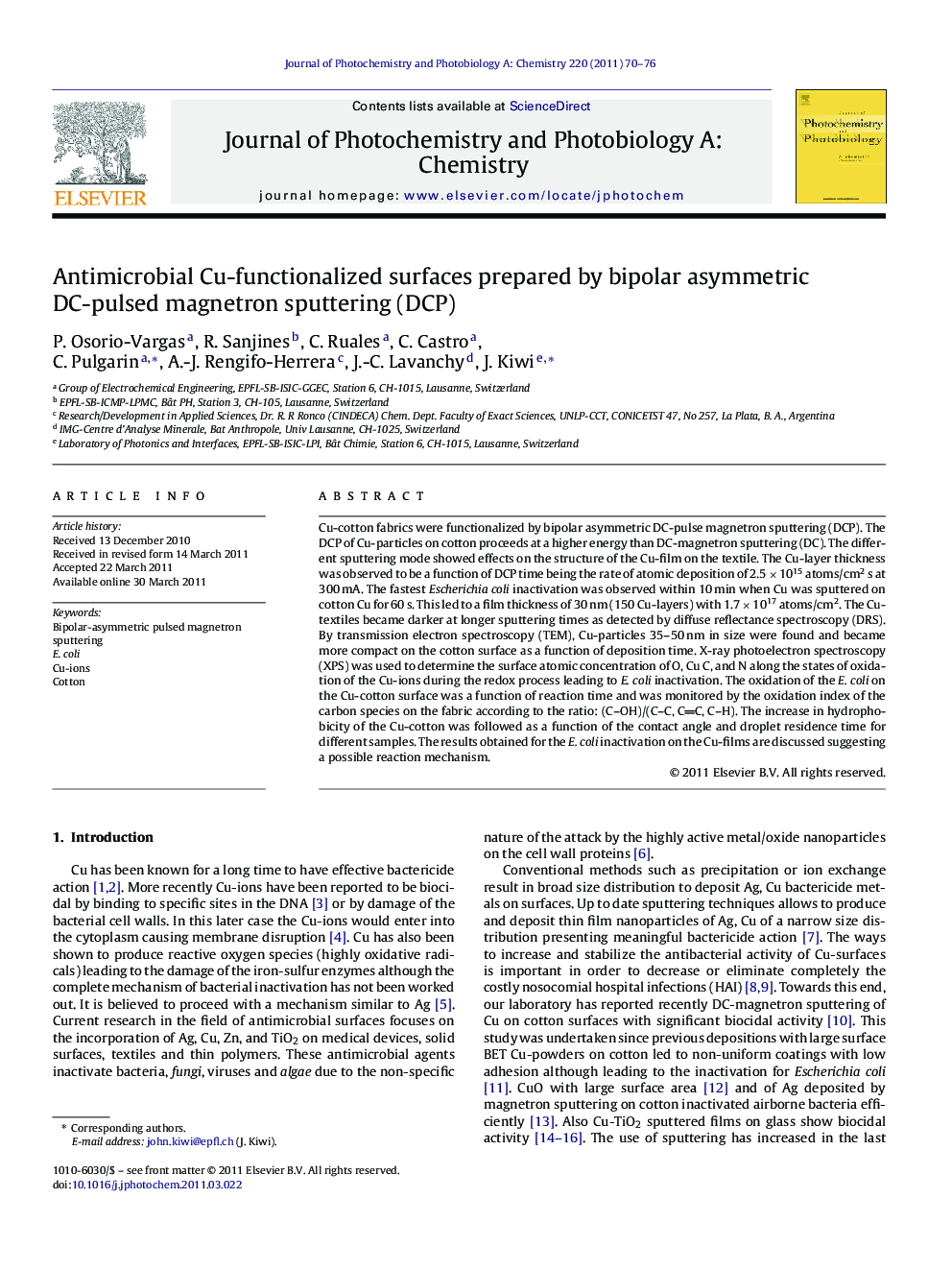| Article ID | Journal | Published Year | Pages | File Type |
|---|---|---|---|---|
| 27350 | Journal of Photochemistry and Photobiology A: Chemistry | 2011 | 7 Pages |
Cu-cotton fabrics were functionalized by bipolar asymmetric DC-pulse magnetron sputtering (DCP). The DCP of Cu-particles on cotton proceeds at a higher energy than DC-magnetron sputtering (DC). The different sputtering mode showed effects on the structure of the Cu-film on the textile. The Cu-layer thickness was observed to be a function of DCP time being the rate of atomic deposition of 2.5 × 1015 atoms/cm2 s at 300 mA. The fastest Escherichia coli inactivation was observed within 10 min when Cu was sputtered on cotton Cu for 60 s. This led to a film thickness of 30 nm (150 Cu-layers) with 1.7 × 1017 atoms/cm2. The Cu-textiles became darker at longer sputtering times as detected by diffuse reflectance spectroscopy (DRS). By transmission electron spectroscopy (TEM), Cu-particles 35–50 nm in size were found and became more compact on the cotton surface as a function of deposition time. X-ray photoelectron spectroscopy (XPS) was used to determine the surface atomic concentration of O, Cu C, and N along the states of oxidation of the Cu-ions during the redox process leading to E. coli inactivation. The oxidation of the E. coli on the Cu-cotton surface was a function of reaction time and was monitored by the oxidation index of the carbon species on the fabric according to the ratio: (C–OH)/(C–C, CC, C–H). The increase in hydrophobicity of the Cu-cotton was followed as a function of the contact angle and droplet residence time for different samples. The results obtained for the E. coli inactivation on the Cu-films are discussed suggesting a possible reaction mechanism.
Graphical abstractFigure optionsDownload full-size imageDownload as PowerPoint slideHighlights► Cu-cotton fabrics were functionalized by bipolar asymmetric DC-pulse magnetron sputtering (DCP). The DCP of Cu-particles on cotton proceeds at a higher energy than DC-magnetron sputtering (DC) showing effects on the structure of the Cu-film on the textile. ► By transmission electron spectroscopy (TEM), Cu-particles 35–50 nm in size were found and became more compact on the cotton surface as a function of deposition time. ► The oxidation of the E. coli on the Cu-cotton surface was a function of reaction time and was monitored by the oxidation index of the carbon species on the fabric according to the ratio: (C–OH)/(C–C, CC, C–H). ► Modification of the cotton by Cu-deposition changes the surface from hydrophilic to increasingly hydrophobic. The Cu-loaded cotton deposited shields the UV-light and becomes an effective antimicrobial agent.
